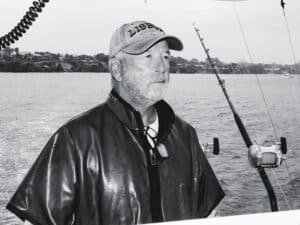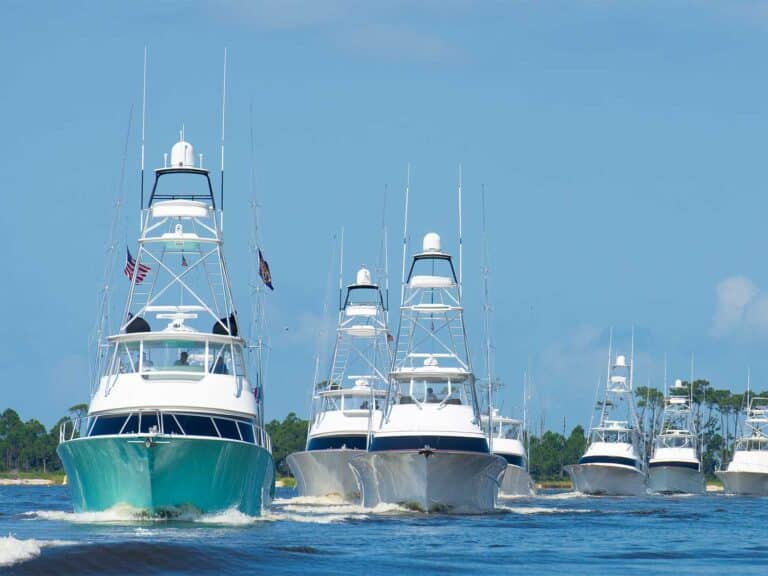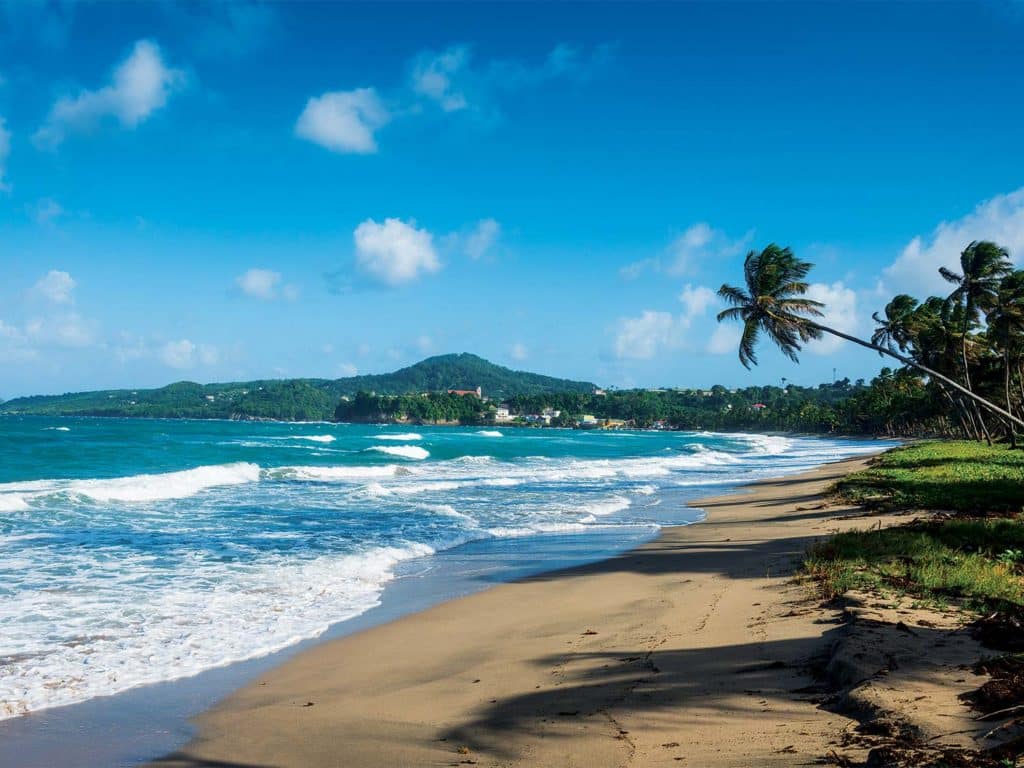
New destinations always have a high probability of creating some amazing memories, and some even suggest the opportunity to provide you with the excursion of a lifetime. With an open mind and a plan, it’s hard to mess up a trip like this, and traveling is one of the greatest ways to experience what I call the new-new: a fishery, a foreign land, a skill, a people. And you also might check a particular fish or location off your bucket list.
I have been fortunate to fish in many big-game locations as captain, mate and, on a few occasions, charter customer. While I really have enjoyed every place I’ve traveled, there is one that just keeps me coming back year after year, and that Caribbean jewel is none other than Grenada.
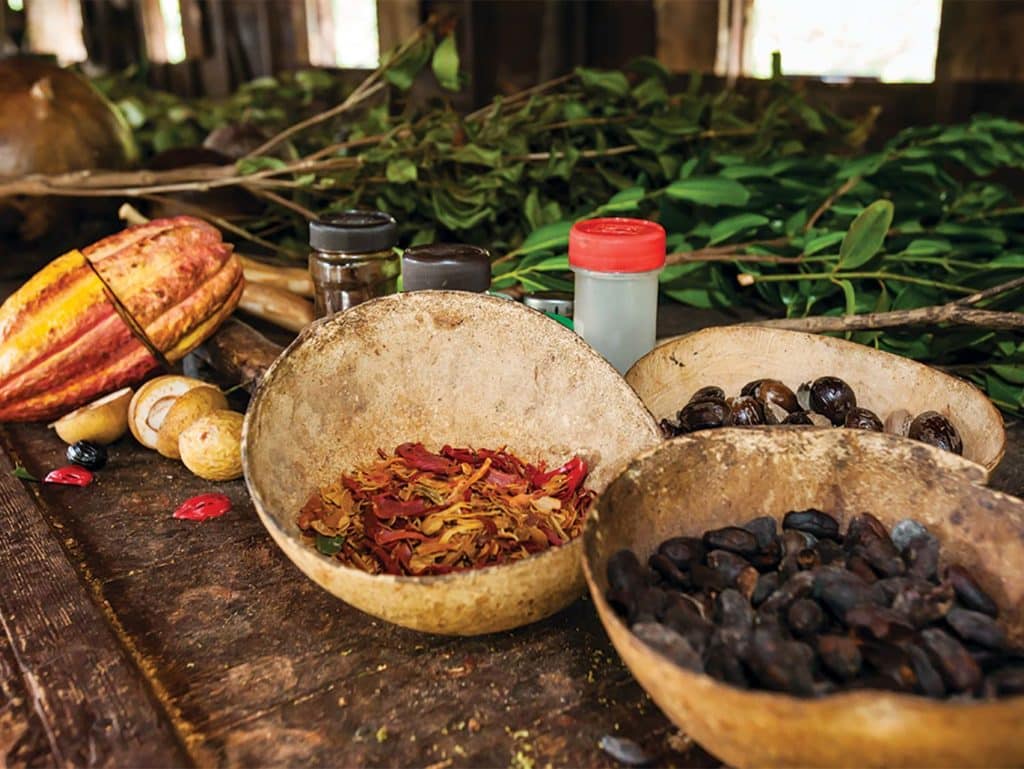
Known as the Spice Island, Grenada is located toward the southern end of the Windward Island chain, some 80-odd miles north of South America. With the Atlantic Ocean to the east and the Caribbean Sea to the west, Grenada has a year-round tropical climate with temperatures usually averaging in the low 80s. This lush and mountainous island is lined with beautiful, soft white-sand beaches and secluded, unspoiled coves; is intertwined with nature trails; and is laced with spice plantations. The capital of St. George’s boasts colorful homes and Georgian-era buildings sprinkled along the hillsides. Just to the south of St. George’s is the famous Grand Anse Beach, with plenty of resorts, bars and restaurants from which to choose. From the phenomenal bluewater fishing to the lushness of the landscape to the friendly people, there really isn’t any reason not to visit.
Watch: Learn to rig a swimming mackerel here.
Grenada truly is a hidden treasure of the Caribbean, and it offers so much to the fisherman and adventurer. This island nation, somehow, has flown under the globe-trotting radar for many years but is quickly becoming not only a must-visit destination, but also a must-fish destination. I mean, why not? The people are lovely, the island is breathtaking, it’s as safe as any other, and the fishing is great. Whether you are looking to go on a family vacation, a couple’s getaway or just a fishing trip with friends, Grenada has something for everyone.
Getting There
GND is the airport code you’ll use when booking your flight—directly to Maurice Bishop International Airport. You’ll need a valid passport with an expiration date no less than six months away, as well as a return ticket to show your date of intended departure. If you plan to depart by boat, be sure to have a copy of the vessel’s entry forms and cruising permit to show customs and immigration when you arrived.
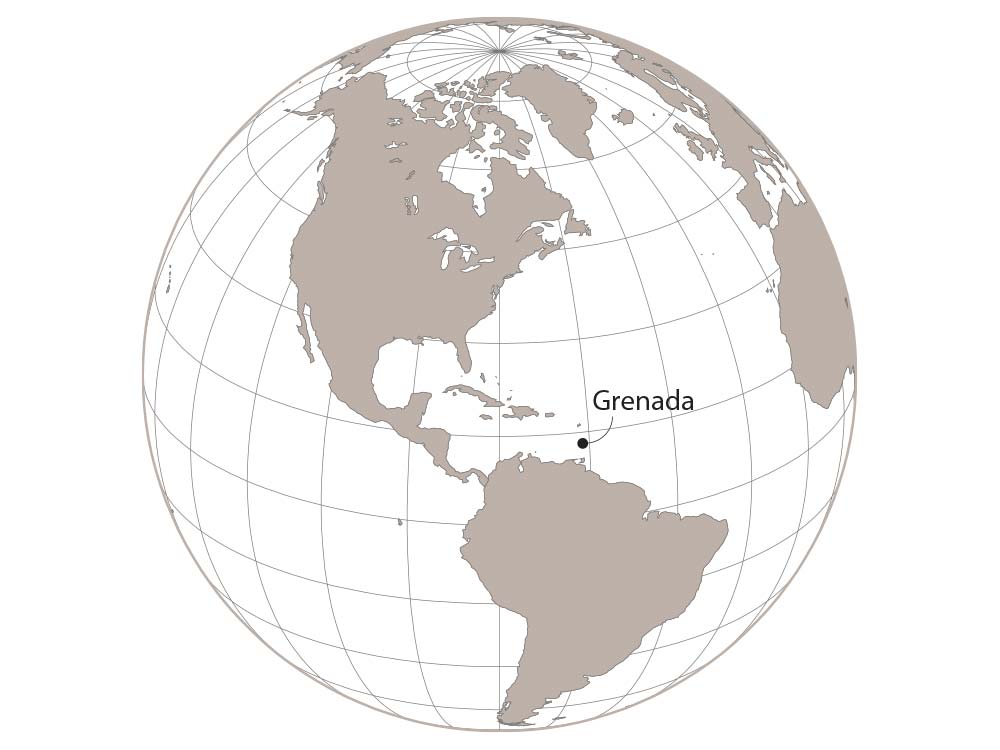
Landing in the area known as Point Salines, this southwest corner of Grenada is where most of the action is. Mountains and rainforest take up most of the center of the island, going as high as 2,756 feet at the summit. Beautiful beaches scatter the coastline, and the majority of the hotels and rental properties are all within 20 minutes of GND, making it easy to get settled in.
If you are coming by boat on its own bottom, Grenada is quite a journey from the United States, but it’s still very possible, especially on larger boats with plenty of range. I have traveled from New Jersey to the southern Caribbean a few times by boat, and it takes a lot of planning and knowing when to use the weather windows to your advantage. I chug primarily at 9 to 10 knots to add range and conserve fuel, and going slow through rough seas is typically easier on the boat and more comfortable than trying to tackle the trip at cruising speed. The Dominican Republic is usually my final stepping stone on the way to Grenada because it’s a 505-nautical-mile trip from Cap Cana directly to Grenada across the eastern portion of the Caribbean Sea.
If you choose to take your own boat to Grenada, check with your insurance company to be sure it covers this kind of trip; you will be much more than 100 miles from the nearest point of land on a few occasions, depending on your course. Familiarize yourself fully with your boat: Know its range and capabilities, then plot your course accordingly.
Or you can make life easy on yourself and ship the boat straight to St. Lucia from Fort Lauderdale, Florida, then pick up the vessel there and enjoy making your way through the picturesque Grenadines with few stops on your way to Grenada. Otherwise, you can just make the one-day move to Grenada—120 nautical miles due south.
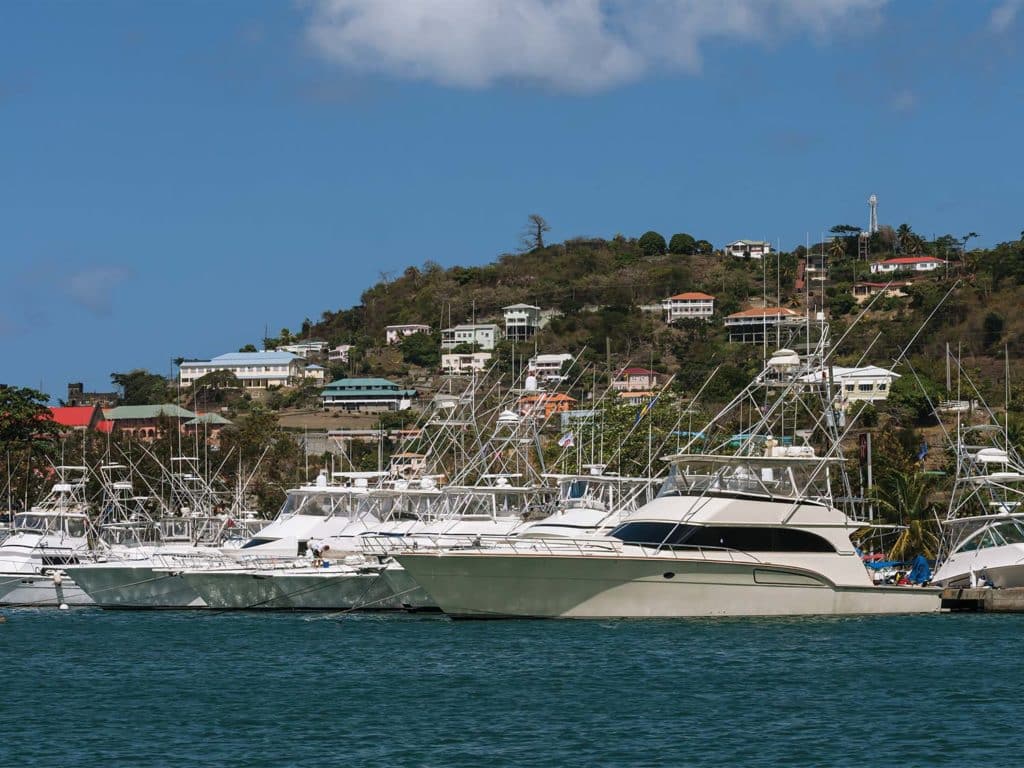
Marina Options and Getting Around
The largest and most popular harbor in Grenada for transients is Port Louis Marina. Located in a well-sheltered lagoon in St. George’s, it’s an absolutely beautiful and well-kept facility with a great staff, fuel delivered by truck, and dockage for sportboats and mega-yachts alike. There are also two restaurants on-site. The customs office is located on the marina grounds to make clearing in simple. On the other side of the lagoon sits the Grenada Yacht Club; it too has some berths as well as fuel. To the south there are a fair number of smaller marinas from which to choose, as well as haulout facilities at Spice Island Marina and Clark’s Court Boatyard and Marina in Woburn.
Taxis are plentiful in Grenada, so they aren’t too hard to find, but I suggest lining yourself up with a driver or two by getting their phone numbers or business cards the first time you ride with them. You can expect to pay $20 to $40 USD for a taxi to get to most of the usual locations, and WhatsApp is by far the easiest method of contact—both talk and text—while on-island. Grenada’s taxi drivers are both reliable and timely, especially if you schedule ahead. Most hotels make it easy to get taxis and will call them for you should you need one on the fly.
Rental cars are also available, but I recommend sticking with taxis. Grenada’s roads are narrow and busy, and driving on the left-hand side of the road throws off many Americans if they aren’t used to it. In order to legally drive, you must obtain a local driver’s license from the police station after showing your home-state license; the cost is $50 XCD (Eastern Caribbean dollars, which is about $18.50 USD). Nearly everywhere in Grenada accepts American currency and major credit cards, and some establishments will convert USD to XCD for a fee less than you’d pay if you exchanged currency at a bank or at the airport.
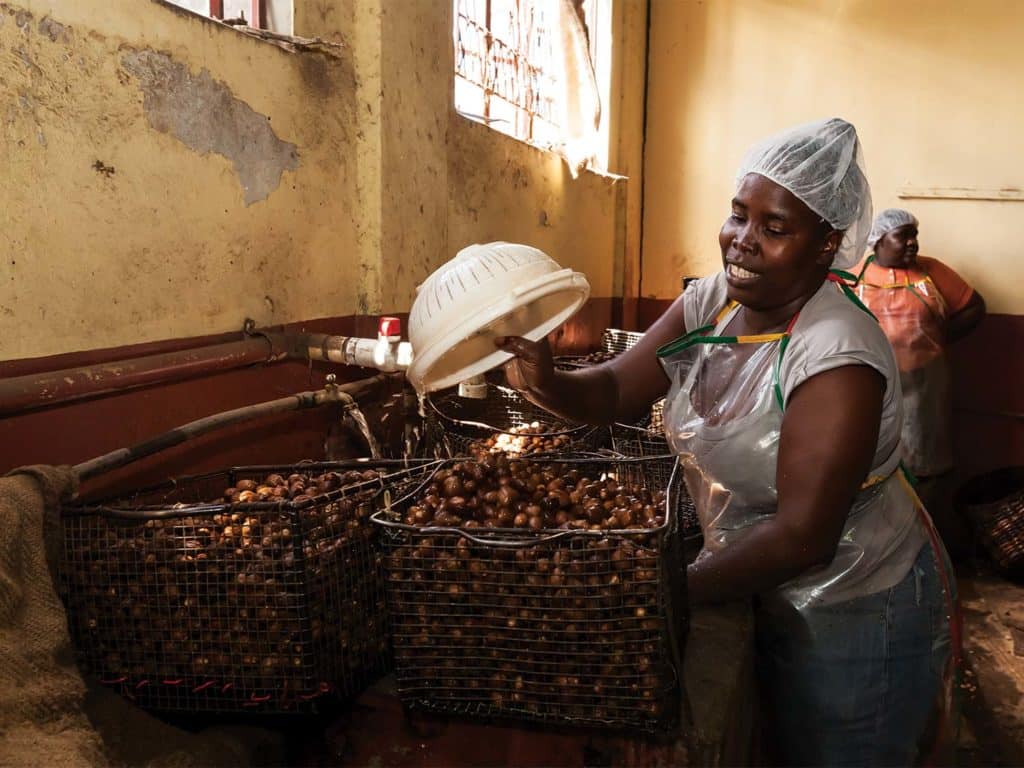
Where to Stay
From the most modest beachfront hotels to lavish resorts and villas, Grenada has plenty of choices depending on what you are looking for and where you plan to recreate. The Radisson or Coyaba Beach Resort gives the best bang for your buck. Located on Grand Anse Beach, it’s a leisurely walk to many bars and restaurants, and both are convenient to Port Louis Marina and the Grenada Yacht Club. For a popular all-inclusive option, Sandals on Pink Gin Beach is located two minutes from the airport and is a 20-minute drive to the marinas.
For something quaint and quiet, True Blue Bay Boutique Resort, Le Phare Bleu and Laluna are some nice, smaller spots that range in price, and each has a restaurant, a bar and spa options on-property. Grenada does posh too. The Calabash, Spice Island Beach Resort and Silversands are great places to stay if you want chic, high-end accommodations and service with almost-limitless pampering and more than a few I-never-want-to-leave moments.
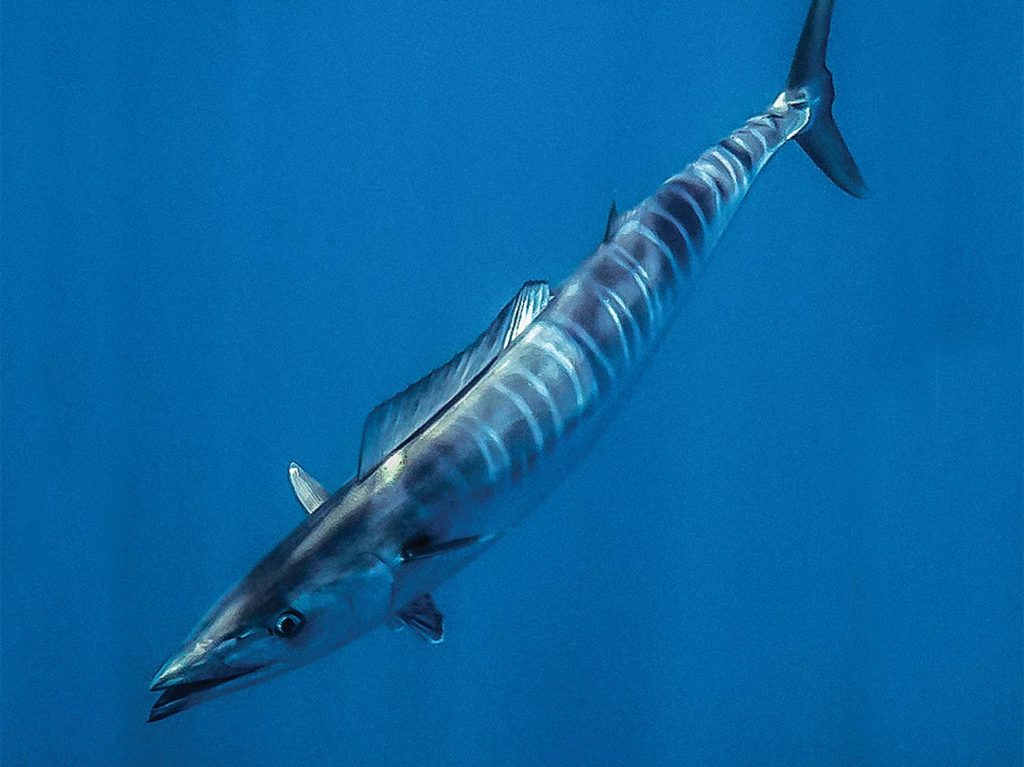
About the Fishing
The beauty of fishing in Grenada is the wide variety of species available on any given day, at any time of the year. It’s a destination where the possibility of catching a grand slam—or even a super slam—is always on the next wave. Your chances increase in the wintertime (as do double-digit sailfish days), but there have been a few crews who have caught grand slams when they least expected it. These warm, crystal-blue waters hold sailfish, blue marlin, white marlin, wahoo, plenty of mahi, and the occasional spearfish.
Most of Grenada’s sport fishing is done on the west side of the island, in the lee. Easterly trade winds make for seriously choppy conditions on the east side, although there are times you can fish fairly tight to the island and still be in somewhat calm waters and catch billfish.
According to Roffer’s Ocean Fishing Forecasting Service president Matthew Upton, Grenada’s two most predominant currents in the southern basin are made up of several different currents entering the Caribbean between Grenada and St. Vincent from the southeast, and the other represents several “floating” gyres that spin off other larger landmasses, such as South America, from the southeast and to the west-southwest. The main eddies propagate from the southeast from South America, originating as far down as the Amazon Basin area, creating a diverse range of life and water masses. These flows occasionally come together in the leeward waters of the island, allowing water to converge along the eddy edges and bait to stack up where the billfish and big tuna certainly don’t have a hard time finding it. These eddies and convergent zones can become a small habitat area for fish to feed for a time before moving on.
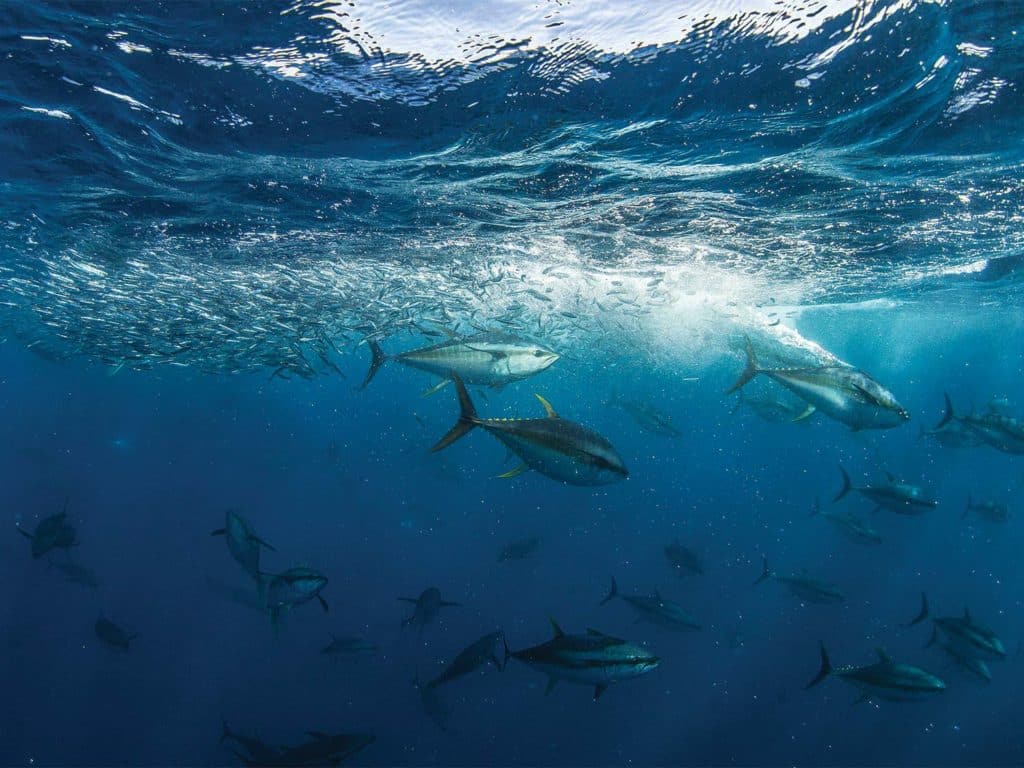
Prime time for Grenada is December through April, but the opportunity exists to catch multiple species throughout the year. Yellowfin tuna in the 100- to 200-pound class can be tangled with on any given day, and well as sailfish, and there is always a chance that the blues, whites, and mahi will be mixed in and hanging out together. I’ve also been able to catch one spearfish just about every year I’ve been here.
The structure in Grenada is really unbelievable, dropping to 600 feet in no time, tight to the island; and it just keeps going to 8,000-plus feet the farther you press to the west. The southwest side of the island has a rather large reef point that extends 15 miles out to sea, and the drop-off along the edge is steep, going from 100 to 600 feet (or deeper) in just a few boat lengths. Most of the big-game fishing in Grenada takes place in 3,000 to 8,000-plus feet of water, but there is one species we tend to target that holds tight to the edge, and that’s the wahoo. The wahoo fishing in Grenada can be nothing short of epic, with fish averaging in the 30- to 40-pound range, but they do grow bigger. Once they’ve taken up residence, it’s not uncommon to get into double digits. So if the billfish are being finicky offshore, you can always target wahoo on the edge in 200 to 500 feet of water to save your day.
On a typical fishing day, we set out to target billfish. Our runs are anywhere from 5 to 20-plus miles, depending on what has been going on and where the fish have been. My typical trolling spread consists of two dredges, two surface teasers and four to five hook baits. While it is rare, we do get blind tuna bites, but normally we see them up on the surface with the porpoises chasing bait, and lots of birds above will help you locate them. Because we have plenty of tuna encounters in Grenada, we like to have three 50W setups rigged and ready in case we run into a big Allison tuna.
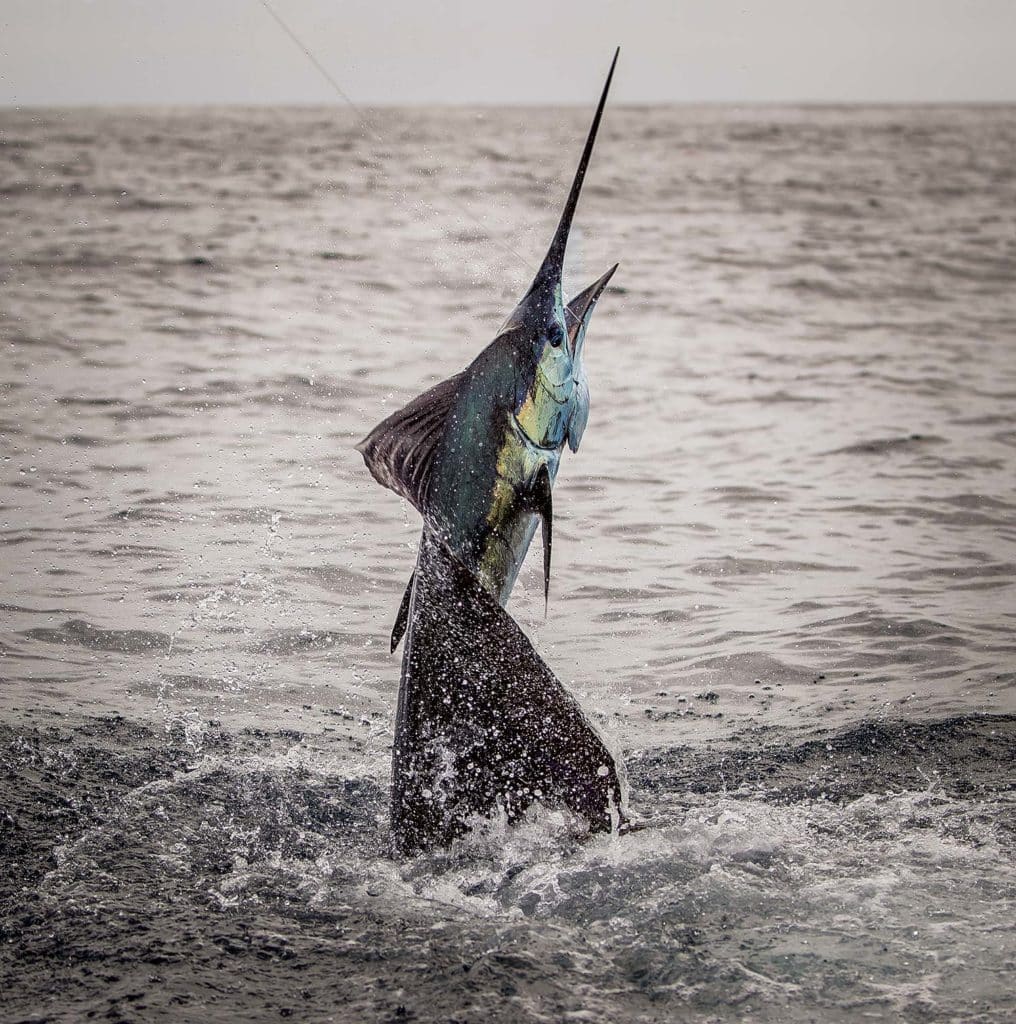
It really is quite a sight to see—these tunas doing their thing, looking very similar to something you might have seen on the National Geographic channel lately.
And for the competitor in you, the Spice Island Billfish Tournament—the largest billfish tournament in the southern Caribbean—is hosted here in late January and is a fun event to attend during the peak of billfish season. The famous Dock Lime and Cookout (lime or limin’ is Windward Island-speak for chilling or hanging out) on the lay day is always a great time.
Wait, There’s More?
Grenada offers plenty to do for those who don’t fish, or even for those who want a little adventure on a day off. You can enjoy the creamy-white beaches, explore the rainforest’s waterfalls, float down one of the natural lazy rivers on inner tubes, go back to the 18th century and take in the breathtaking 360-degree views from Fort Frederick, or tour the rum distilleries and cocoa and spice plantations.
Nearly any taxi driver can take you on an island tour, and there are also a few companies that offer a more tailored, in-depth historical tour. You can even explore the island by ATV. The list really does go on forever.
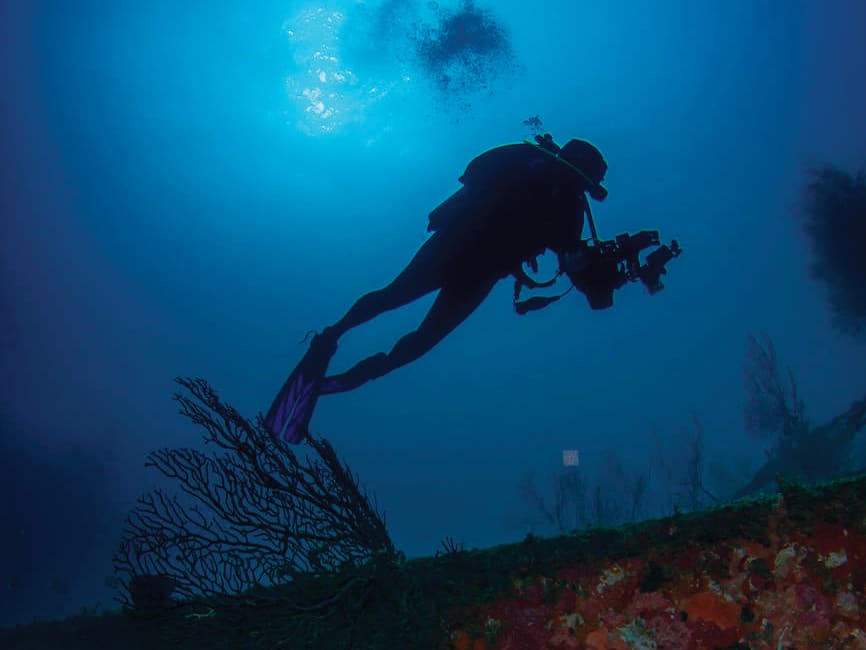
This gem of an island is blessed with brilliant, crystal-clear waters, and as expected, has some great scuba diving and snorkeling. The easiest, most popular snorkeling trip is a visit to the Grenada Underwater Sculpture Park, the world’s first. As for scuba diving, there are a number of great dives to go on—reefs and shipwrecks. The most presiding wreck of all is that of the near-600-foot French luxury passenger ship Bianca C—also known as “the Titanic of the Caribbean”—which sank while anchored off St. George’s on October 22, 1961, after an explosion in the main boiler room resulted in a full-blown fire. Whatever your experience level is, there are plenty of options for diving in Grenada, and there won’t be a single one you’ll regret.
Grenada has a good assortment of local and cosmopolitan restaurants and beach bars, most of which take advantage of the ambience the island naturally has to offer. I highly recommend trying some Caribbean favorites such as curried goat or chicken roti—a dish of chicken thighs, potatoes and chickpeas bathed in a rich and savory-spiced sauce. If you’re a foodie, you can easily try a new spot every day—just don’t forget to order a rum punch to go with it.
With so much to offer by way of its bluewater-fishing scene and awe-inspiring beauty, it’s easy to see why this friendly Isle of Spice is fast becoming a must-go-to destination.
And the best part about Grenada is that if none of the above options appeals to you, then it’s just as easy to kick back and unwind on any of the beautiful beaches—with a cocktail in hand and not a single care in the world. Now that’s pure Grenada.
This article was originally published in the August/September issue of Marlin.



